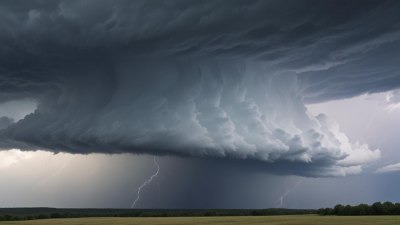Why Every Season Feels Like a Whole New Identity Crisis
Explore how seasonal changes impact our identity and emotions, sparking new personal reflections.

As the seasons shift—from the vibrant blooms of spring to the harsh chill of winter—our perceptions of ourselves and the world around us transform. This phenomenon is often referred to as an identity crisis, a period of internal confusion and examination that can strike at various points in our lives, but seems particularly pronounced with the changing seasons.
Each season ushers in not only changes in weather but also shifts in societal norms, personal interactions, and even interior landscapes of thought. Spring symbolizes rebirth and renewal, summer captures freedom and exploration, fall embodies reflection and change, and winter invites introspection and solitude. Understanding how these seasonal shifts affect our identity can shine a light on who we are and who we wish to become.
Spring: Rebirth and Renewal
As winter releases its grip, spring emerges, breathing new life into nature. The air turns fresh, flowers bloom, and a sense of anticipation fills the atmosphere. This is a time of rebirth, not just for the earth but for individuals looking to shake off seasonal depression often tied to long, cold months. Many find themselves inspired to reassess their goals and dreams. New hobbies may be pursued, relationships rekindled, and initiatives launched. The phenomenon of 'spring fever' illustrates this surge in energy; we are naturally inclined to initiate change and embrace new opportunities.
This season reminds us of our capacity for growth and transformation. As the colors around us shift, many individuals also experience a personal blossoming. Yet, with this growth can come a sense of pressure. The intense yearning for personal improvement may propel individuals into existential dilemmas, questioning their past paths and future directions. Who are we without our winter layers? What new identity can we adopt? Much like the trees shedding their leaves, we grapple with what to hold onto and what to let go.
Summer: Freedom and Exploration
With the arrival of summer, a powerful sense of freedom often accompanies the longer days and warmer temperatures. This season is laden with opportunities for exploration and adventure, be it through travel, social gatherings, or simply enjoying the outdoors. For many, summer represents a break from routine, a chance to experiment with new lifestyles and identities. The spirit of adventure encourages individuals to step away from their established selves and try on different personas.
However, as invigorating as this freedom may feel, it also raises questions. In the absence of routine and familiar societal structures, individuals can encounter an identity crisis precipitated by introspection. Who are we when we are not constrained by work or societal expectations? Is our sense of self tied to our responsibilities, or is there a core identity that remains unwavering? While summer invites us to embrace novelty, it also confronts us with the disorienting aspects of a fluid self-image. Are we defined by our adventures, or are we searching for an elusive sense of belonging?
Fall: Reflection and Change
As summer fades into fall, a period of reflection often ensues. The transition from the vibrant colors of summer to the muted tones of autumn signals a time of letting go. Trees shed their leaves, and many people find themselves shedding aspects of their identity in a parallel journey. Fall symbolizes not only a change in nature but also a time to introspect about one’s circumstances, relationships, and personal choices.
This transition can stir up feelings of melancholy and contemplation about life choices. Such reflections may lead to varying degrees of identity crisis. The approach of winter can trigger anxieties as individuals contemplate the year’s accomplishments and shortcomings. Questions may arise: Have I achieved what I set out to do this year? How do I want to transition into the next phase of my life? What are the changes I need to embrace? While fall encourages introspection, it also pushes people to confront their fears and apprehensions about change.
Winter: Introspection and Solitude
Winter brings with it a unique set of challenges and opportunities for self-reflection. The starkness of winter can feel isolating, leading to a deeper examination of one’s identity. The cold often encourages people to retreat indoors, sparking a time of solitude where thoughts run deep. This can be both comforting and confronting, as individuals confront truths about themselves that may have been overlooked during the busier seasons.
The season forces a review of personal beliefs, relationships, and goals. Questions may arise that can amplify identity crises: Am I satisfied with the life I’m building? What parts of my identity do I need to shed before the new year arrives? As the new year approaches, there's often a drive to set resolutions and establish intentions for growth, which can further complicate feelings of identity and purpose. Winter becomes a canvas for quiet reflection, inviting profound self-discovery.
Seasonal Affective Disorder and Emotional Impact
For many, the emotional weight of seasonal changes can be further complicated by conditions such as Seasonal Affective Disorder (SAD). This mood disorder, characterized by depressive symptoms during particular seasons, dramatically alters perceptions of self and identity. People coping with SAD may find that their self-esteem ebbs and flows with the sun. The inconsistency can lead to crises of confidence and a struggle to maintain a stable self-image.
Understanding how seasonal fluctuations affect mental well-being is crucial in mitigating identity crises during these times. Whether through therapy, community support, or individual coping mechanisms, recognizing the external triggers related to season can empower individuals to respond proactively to their emotional needs. It is essential to create routines, embrace mindfulness, and establish connections that promote well-being throughout the seasons.
Identity and Society
Society also plays a significant role in how individuals experience identity crises during seasonal changes. Cultural rituals, holidays, and societal pressures often coincide with particular seasons, adding layers to personal identity struggles. For instance, the winter holidays can amplify feelings of isolation for those disconnected from family or community. Similarly, the summer vacation season can generate feelings of inadequacy in those who may not have the resources to partake in large-scale travel or social events.
The awareness of societal narratives around identity can exacerbate personal reflection. How does one’s identity fit within the broader societal expectations during each season? As individuals wade through seasonal transitions, they find themselves caught between personal desires and societal benchmarks, leading to a multifaceted identity crisis.
Finding Stability Amid Seasonal Changes
Amid the tumultuous shifts brought on by seasonal changes, finding stability can be a daunting task. However, several strategies can support individuals as they navigate through identity crises that occur with each season. Establishing mindfulness practices, such as journaling, meditation, or positive affirmations can help individuals center themselves. Engaging in regular physical activities, maintaining a healthy lifestyle, and fostering connections with others can reinforce a sense of belonging.
Moreover, embracing the changes rather than resisting them may offer a less tumultuous journey through identity transitions. Recognizing that it’s natural to redefine oneself repeatedly is essential. No season of life is stagnant; each wave of change not only challenges but also enriches our identity. At the heart of these seasonal shifts is a continuous opportunity for learning and personal growth.
As the seasons reveal their ever-changing faces, so do we. The feelings of an identity crisis that arise with seasonal transitions are a testament to our ability to grow and adapt. Every spring blossoms with potential, summers encourage exploration, falls prompt reflection, and winters inspire introspection. Navigating these seasonal transitions offers a profound opportunity for self-discovery, urging us to embrace the multifaceted nature of our identity. Ultimately, understanding the impact of seasonal changes on our personal identities can lead to a richer, more fulfilling experience as we journey through life, reminding us that every passage of time is a chance for renewal and growth.











